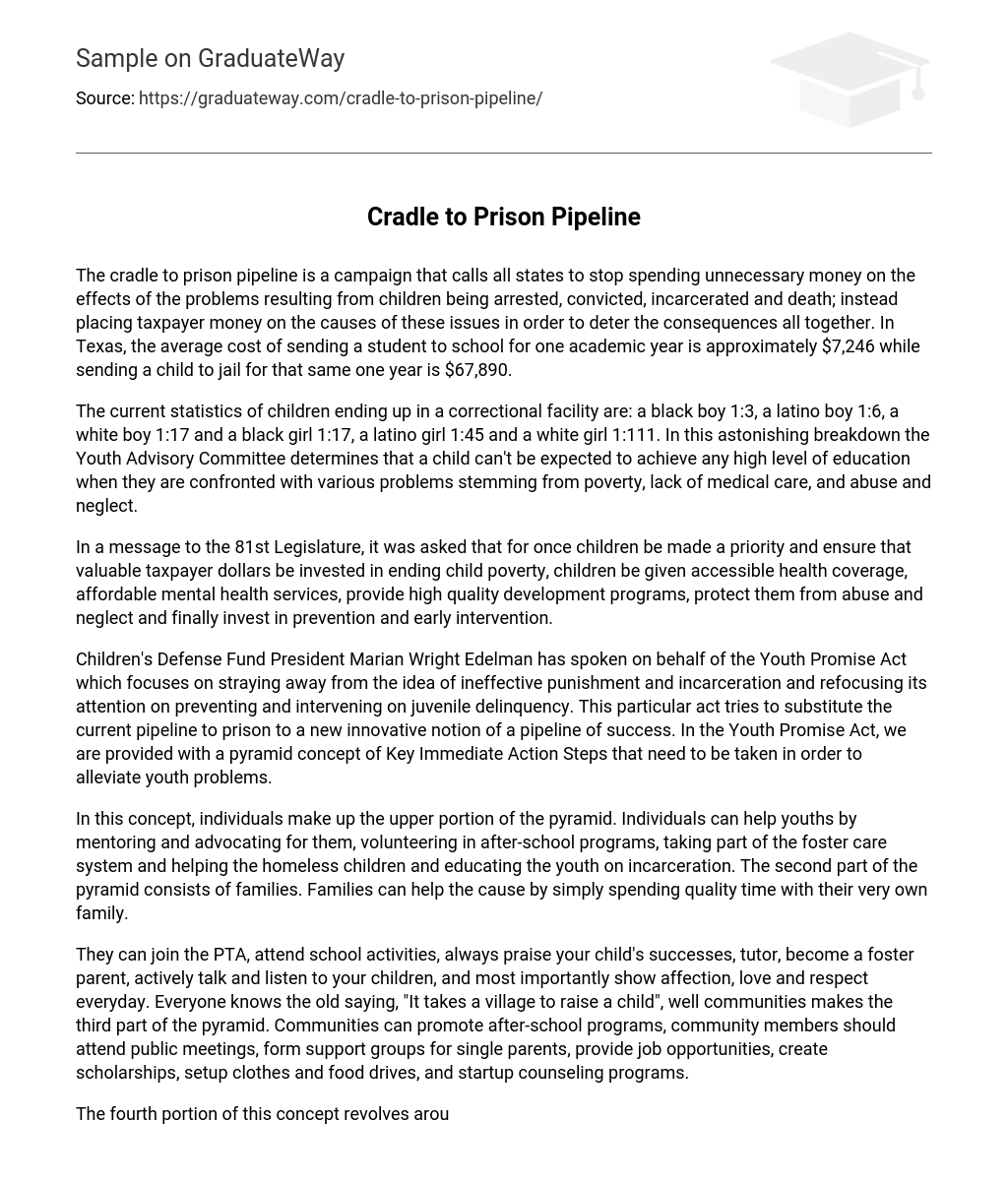The cradle to prison pipeline campaign advocates for redirecting taxpayer money from dealing with the repercussions of children’s arrests, convictions, incarcerations, and deaths towards addressing the root causes of these issues to prevent them altogether. In Texas, it costs an average of $7,246 to send a student to school for one year, whereas incarcerating a child for the same duration costs $67,890.
The current statistics of children ending up in a correctional facility are as follows: 1 in 3 black boys, 1 in 6 latino boys, 1 in 17 white boys, 1 in 17 black girls, 1 in 45 latino girls, and 1 in 111 white girls. The Youth Advisory Committee has determined that these alarming figures highlight the obstacles faced by children in achieving a high level of education. These challenges are often rooted in issues such as poverty, lack of medical care, and abuse and neglect.
The 81st Legislature was urged to prioritize children and allocate taxpayer funds towards addressing child poverty, providing accessible health coverage, affordable mental health services, offering high-quality development programs, safeguarding against abuse and neglect, and investing in prevention and early intervention initiatives.
President Marian Wright Edelman of the Children’s Defense Fund has advocated for the Youth Promise Act, which aims to move away from ineffective punishment and incarceration for juvenile delinquency. Instead, the act focuses on preventing and intervening in youth delinquency, aiming to create a new path towards success rather than one leading to prison. The act outlines a pyramid concept of Key Immediate Action Steps that should be implemented to address youth issues.
In this concept, individuals and families both play important roles in making a positive impact on the well-being of youth. Individuals can contribute by mentoring and advocating for young people, volunteering in after-school programs, participating in the foster care system, aiding homeless children, and educating youth about incarceration. Families, on the other hand, can support the cause by dedicating quality time to their own family.
They can join the PTA, attend school activities, always praise your child’s successes, tutor, become a foster parent, actively talk and listen to your children, and most importantly show affection, love and respect everyday. Everyone knows the old saying, “It takes a village to raise a child”, well communities makes the third part of the pyramid. Communities can promote after-school programs, community members should attend public meetings, form support groups for single parents, provide job opportunities, create scholarships, setup clothes and food drives, and startup counseling programs.
The fourth part of this concept relates to organizations. Organizations can vary in size, and those with the financial means can choose to invest in preventive measures and interventions. They can also organize health fairs, offer free tax filing services, educate on conflict resolution, promote alternatives to incarceration such as community service, ensure that counseling and social services are available for young people in need, and allocate resources for the improvement of parks, schools, and roads. The government agencies make up the final level of the pyramid.
The government can assist by ensuring that all officials are informed about the current issue. They can also provide appropriate treatment for behavioral and emotional needs to all children. Additionally, the government should promote high-quality television programming and development programs. Furthermore, expanding “second-chance” programs and focusing on suitable treatments can help reduce the rates of repeat offenders. The government should also guarantee that children are at the appropriate reading levels and invest in community-based rehabilitation centers and programs.
In conclusion, the aforementioned causes can be addressed through collective action. It is imperative that we come together and strive for a favorable result to safeguard our youth. Instead of squandering money on trivial items, redirecting these resources towards alternative avenues could certainly pave the way for a more promising future for future generations.





